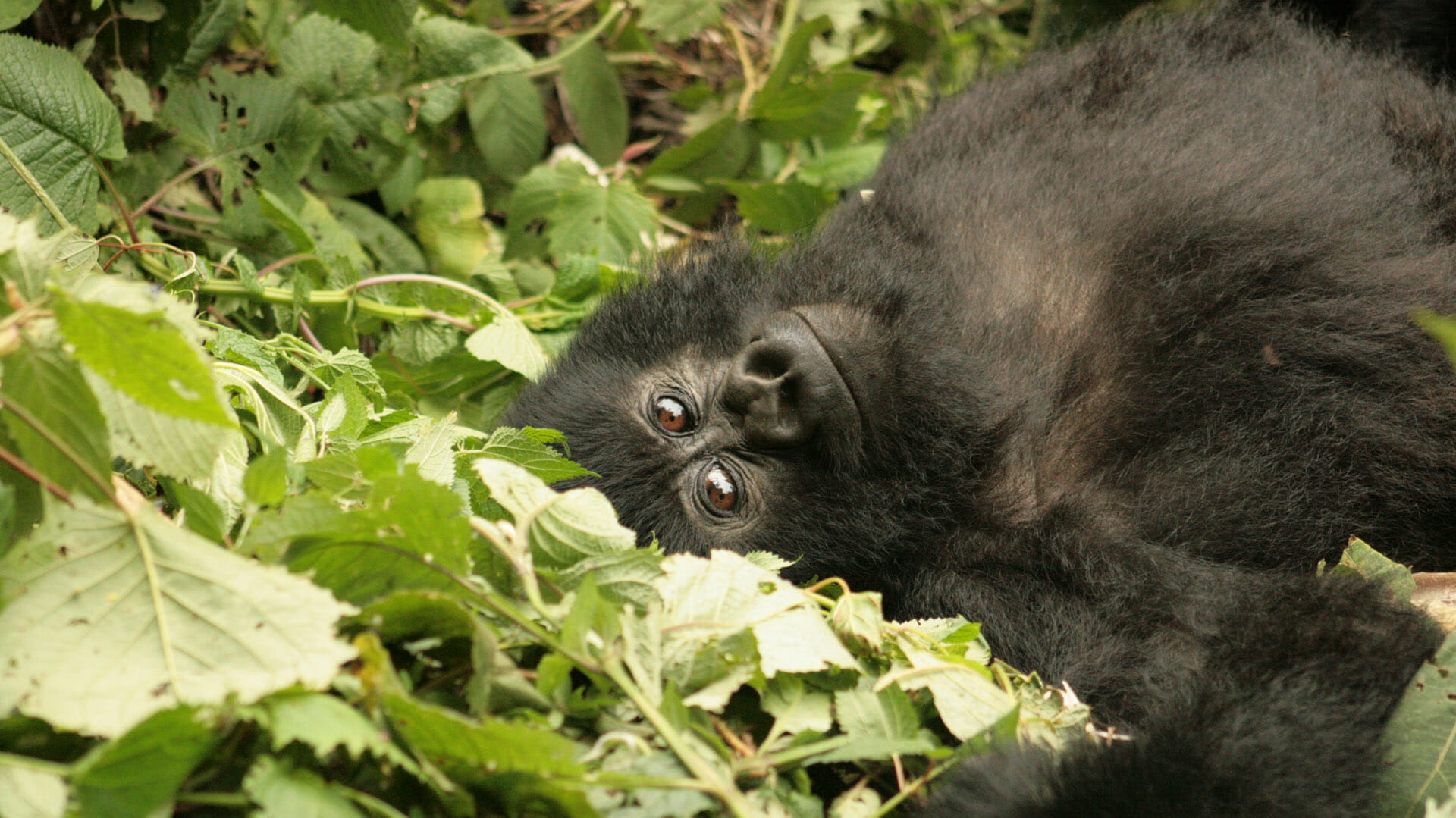Why Do Mountain Gorillas Trek?
Why do mountain gorillas trek? Knuckle-walking also best referred to as quadrupedal walking is a unique locomotion style that gorillas and chimpanzees use. Gorillas are the biggest living primates and they dwell mostly within the East-Central African jungles.
Mountain gorillas behave more like humans and this is undoubtedly considering the fact that they share up to 98% of their DNA with us. Like other primates, mountain gorillas are nomadic – their daily life revolves around searching for areas with palatable pastures for them to forage.
Mountain gorillas trek or move long or short distances searching for food – the distance covered all depends on where can find abundant forage to feed on for the day. During gorilla trekking or a trek to see these large apes, how long you will spend in the wild is usually determined by the distance they move or their location. Usually, the silverback or male-dominant gorilla leads the rest where they can go to forage from.

Gorilla lying down
Another factor that makes mountain gorillas trek is that they do build new nests each day but within their home range. Because new nests are built each day, they can’t be stationed in one area.
Why do gorillas knuckle-walk?
Gorillas knucklewalk for many reasons though no clear explanation has been put forward. But, some of the reasons are perhaps gorillas are massive – being the world’s biggest living primates with a weight range of about 200kgs – this alone can explain why they opt for knuckle-walking to cut down on the effect their weight may impose on their soft tissues in the forelimbs.
Unlike humans, the hips of gorillas are attached differently and they can’t stand for long on two legs otherwise they can experience pain. For humans, they are capable of walking on all the fours too that is if their hips were also placed the same way.
While knuckle-walking, gorillas can carry small objects even when they are walking on their fours.
They prefer knuckle-walking considering their long arms, stiff backs, short legs, etc. The male gorilla arm stretches from 7.5ft to 8.5ft.
Bipedalism doesn’t favor gorillas considering their body structures – they are designed for quadrupedal walking. This kind of locomotion favors their weight and also allows stability when moving. They have wider finger bones and are flatter creating a more stable base area around their forearms.
However, mountain gorillas sometimes do bipedal walks as well. They can stand upright or move on two legs but for a short time. While on a gorilla trek, you may have a chance to see them bipedal especially when they are displaying or beating their chests or when they encounter an enemy or when they want to carry something.
Do gorillas climb trees?
While mountain gorillas are considered to be more of terrestrial species, at times they do climb trees. They grasp using all their 4 limbs. Their feet are uniquely made making them adaptable for climbing.
How fast can gorillas trek?
Mountain gorillas can move fast while in their natural habitat. They can move at a speed of 20mph to 25mph. This means that if they charge at you while you are in the jungles for gorilla trekking in Mgahinga, Bwindi Impenetrable National Park or Volcanoes National Park, don’t run! Better you stand still, lower your face down as you steadily create space between you and them.
What do gorillas feed on?
Mountain gorilla diet ranges from bamboo shoots, fruits, stems, leaves, and at times, termites, ants and more. The baby gorilla can breastfeed and at 3 to 4 years, they can begin feeding on adult diet. Because gorillas depend largely on succulent food, they rarely or even don’t drink water.
